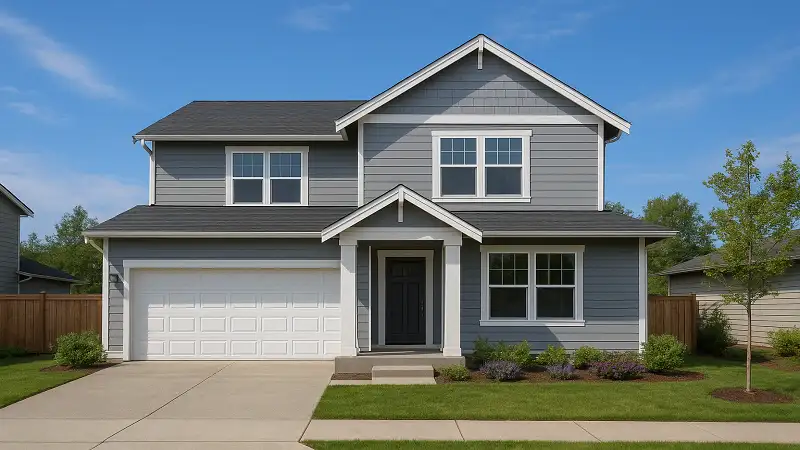Improving your home is one of the most rewarding investments you can make. Whether you want to enhance comfort, boost property value, or simply make your living space more beautiful, home improvement is a journey that covers design, renovation, décor, and maintenance. This guide walks you through each aspect of home improvement, offering insights and practical tips to help you transform your house into a space that truly feels like home.
Understanding the Importance of Home Improvement

Home improvement is more than just fixing a broken faucet or painting the walls a new color. It is about creating a space that reflects your personality, supports your lifestyle, and ensures long-term functionality. A well-improved home can:
-
Increase property value: Upgrades like modern kitchens, energy-efficient windows, and updated bathrooms can boost resale prices.
-
Improve functionality: Renovations help make a home more efficient, organized, and comfortable.
-
Enhance safety: Regular maintenance ensures that plumbing, electrical systems, and structural elements remain safe.
-
Promote well-being: A well-designed and decorated home reduces stress and creates a peaceful environment.
Home improvement is therefore a blend of creativity, practicality, and foresight.
Planning Your Home Improvement Journey

Before diving into design or renovation, planning is crucial. Without a solid plan, even small projects can become overwhelming and costly. Here are some key steps:
a) Assess Your Needs
Identify what your home lacks. Do you need more space, better storage, or improved energy efficiency? Make a list of priorities.
b) Set a Budget
Decide how much you can spend and break it down by project. Factor in unexpected costs—experts recommend setting aside 10–15% for surprises.
c) Research and Inspiration
Look at magazines, websites, and social media platforms like Pinterest for ideas. Collect images, color palettes, and design styles that resonate with you.
d) Hire Professionals (When Needed)
Some tasks, like electrical work or plumbing, require licensed experts. For design, you may also consult interior designers or architects.
Proper planning ensures smoother execution and fewer regrets later.
Home Design: Creating Spaces that Reflect You

Design is the foundation of any home improvement project. Good design combines beauty with practicality, ensuring that your home is not only stylish but also livable.
a) Choosing a Design Style
From minimalist and modern to rustic or traditional, your design style sets the tone. Pick a style that aligns with your taste and fits your home’s architecture.
b) Maximizing Space
Even small homes can feel spacious with the right design. Use open floor plans, multifunctional furniture, and clever storage solutions to make the most of your space.
c) Lighting as a Design Element
Lighting impacts mood, functionality, and aesthetics. Use a combination of natural light, ambient lighting, and task lighting to brighten your home.
d) Color Psychology
Colors influence how we feel. For instance, blues and greens promote calmness, while yellows and oranges add energy. Choose colors that fit the purpose of each room.
A thoughtful design transforms your house into a harmonious living environment.
Renovation: Breathing New Life into Old Spaces

Renovation focuses on upgrading or remodeling existing parts of the home to make them modern, functional, and durable.
a) Kitchen Renovation
The kitchen is the heart of the home. Upgrading countertops, cabinets, and appliances can dramatically change its look and functionality. Open shelving, islands, and energy-efficient appliances are popular trends.
b) Bathroom Renovation
Bathrooms require both style and utility. Renovations may include installing new tiles, upgrading fixtures, or adding storage. Features like walk-in showers, double sinks, and heated floors add luxury.
c) Living Room Renovation
A comfortable living room sets the tone for your home. Renovations might include updating flooring, adding built-in shelves, or creating a focal point with a fireplace or entertainment center.
d) Structural Renovations
These include knocking down walls for open spaces, adding extensions, or improving insulation. Such changes often require permits but can greatly enhance the usability of your home.
Renovation modernizes your home and adapts it to your changing needs.
Décor: Adding Personality and Style

While design and renovation shape the structure, décor gives your home character. It includes furniture, accessories, art, and textiles.
a) Furniture Selection
Choose pieces that are both functional and stylish. Invest in high-quality essentials like sofas, beds, and dining tables, while mixing in affordable accent pieces.
b) Wall Décor
Art, mirrors, and photographs personalize your space. Statement walls with bold paint, wallpaper, or wood paneling can add dramatic flair.
c) Textiles and Accessories
Rugs, cushions, and curtains bring warmth and texture. Seasonal accessories, like throws or table centerpieces, allow you to refresh your home affordably.
d) Plants and Greenery
Indoor plants not only beautify your home but also improve air quality. Choose low-maintenance options like snake plants or succulents if you’re new to plant care.
Decorating is where creativity shines, turning a house into a reflection of who you are.
Maintenance: Protecting Your Investment

A beautiful home requires consistent care. Regular maintenance prevents costly repairs and keeps your home safe.
a) Exterior Maintenance
Inspect your roof, gutters, and siding regularly. Keep driveways clean, repaint exteriors when needed, and maintain landscaping.
b) Interior Maintenance
Check plumbing, electrical systems, and heating/cooling equipment. Replace filters, clean vents, and test smoke detectors often.
c) Seasonal Maintenance
Prepare for weather changes by insulating pipes in winter, servicing air conditioners before summer, and checking windows for drafts.
d) Preventive Care
Address small problems early—like leaky faucets or cracks in walls—before they become expensive repairs.
Consistent maintenance ensures that your home remains safe, comfortable, and long-lasting.
Budget-Friendly Home Improvement Tips
Home improvement doesn’t have to drain your finances. With smart strategies, you can enhance your home affordably.
-
DIY Projects: Painting, gardening, or assembling furniture can save costs.
-
Repurpose and Upcycle: Transform old furniture with fresh paint or use reclaimed wood for décor.
-
Shop Smart: Buy during sales or explore second-hand shops for unique pieces.
-
Focus on High-Impact Changes: Small updates like changing light fixtures, updating cabinet handles, or adding new curtains can create a big difference.
Budget-friendly improvements allow you to refresh your home without overspending.
Sustainable and Eco-Friendly Home Improvements

Sustainability is an essential part of modern home improvement. Eco-friendly choices not only reduce environmental impact but also save money in the long run.
a) Energy Efficiency
Install LED lights, energy-efficient appliances, and smart thermostats. Solar panels are a long-term investment that reduces energy bills.
b) Water Conservation
Low-flow faucets, showerheads, and dual-flush toilets help reduce water use. Collecting rainwater for gardening is another eco-friendly step.
c) Sustainable Materials
Use bamboo, reclaimed wood, or recycled materials in your projects. They are both stylish and environmentally responsible.
d) Waste Reduction
Recycle renovation debris and donate unwanted furniture instead of discarding it.
Eco-friendly improvements make your home healthier and future-ready.
Hiring the Right Professionals

Some projects demand expertise, and hiring the right professional can make or break your project.
-
Architects and Designers: For major renovations or new builds.
-
Contractors: For remodeling projects requiring multiple trades.
-
Specialists: Electricians, plumbers, and HVAC experts for technical work.
-
Inspectors: To evaluate safety and compliance with building codes.
Always check licenses, references, and reviews before hiring. Clear communication about budget and timelines is essential for success.
The Long-Term Benefits of Home Improvement

Investing time, money, and effort into your home yields lifelong rewards:
-
Comfort: You create a safe and relaxing environment for your family.
-
Financial Value: Property improvements increase your home’s market worth.
-
Lifestyle Enhancement: A home that fits your needs enhances daily living.
-
Legacy: Maintaining and improving your home ensures it remains valuable for future generations.
Home improvement is a continuous journey, not a one-time task. Every small step contributes to a home that grows with you.
Conclusion
Home improvement is a multifaceted process that involves design, renovation, décor, and maintenance. By planning carefully, making thoughtful choices, and balancing beauty with functionality, you can create a home that meets your present needs and adapts to your future ones. Whether you’re tackling a full renovation, refreshing your décor, or focusing on preventive maintenance, each effort adds value and comfort.
Your home is more than just a shelter—it is a reflection of your personality, your lifestyle, and your dreams. With the right approach, you can transform it into a space where beauty, function, and happiness coexist harmoniously.
When tackling home improvement—whether it’s optimizing layouts, refreshing décor, implementing renovations, or staying on top of maintenance—protecting your most valuable belongings should be part of the plan. Renting self storage like the storage units Quebec offers a reliable, secure solution for keeping items like family heirlooms, sensitive documents, or seasonal décor safely tucked away. This not only clears clutter from your workspace but also protects your treasured possessions from dust, damage, or disruption, allowing you to focus fully on transforming your home into a space that’s both functional and beautifully reflective of your style.


